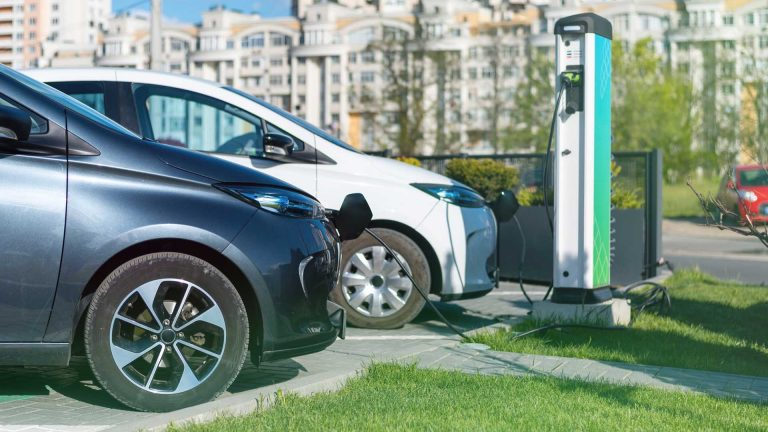As electric vehicles (EVs) continue to surge in popularity, the need for robust charging infrastructure has become more pressing than ever. In 2023, a study by Bloomberg Green reported that global EV sales reached a record-breaking 10 million units. With projections suggesting that sales could double in the next few years, fast charging networks are crucial for supporting this growth. In this article, we’ll explore why fast charging networks are pivotal to EV adoption in 2024, discuss the latest advancements, and provide practical tips for EV owners.
The Importance of Fast Charging Infrastructure
Why Fast Charging Networks Matter
Fast charging networks are the backbone of the electric vehicle revolution. They enable EVs to be charged in a fraction of the time it takes with standard chargers, addressing one of the primary concerns of potential EV buyers: range anxiety. According to InsideEVs, fast chargers can replenish an EV battery up to 80% in just 30 minutes, making long-distance travel more feasible.
- Convenience: Fast chargers are strategically located along highways and in urban centers, allowing drivers to charge quickly and conveniently.
- Increased Adoption: A widespread fast charging network encourages more consumers to switch to EVs, knowing that they won’t be stranded without power.
- Support for Urban Mobility: In densely populated areas, where home charging might not be an option, accessible fast chargers ensure EVs remain practical.
The Current State of Fast Charging Networks
As of 2023, companies like Tesla, Rivian, and Volkswagen have made significant strides in expanding their fast charging networks. Tesla’s Supercharger network, for instance, boasts over 45,000 chargers worldwide, while Electrify America plans to double its charging stations to 1,800 by the end of 2024, according to Reuters Mobility.
- Tesla Superchargers: Known for their reliability and speed, Tesla’s network is often considered the gold standard in fast charging.
- Electrify America: With a diverse range of charging stations compatible with most EV models, Electrify America is a key player in the U.S. market.
- IONITY: A European leader, IONITY aims to have 7,000 high-power chargers operational by 2025, catering to cross-border travel.
Innovations in Charging Technology
Advancements in Battery Technology
Recent developments in battery technology are set to revolutionize fast charging. According to MIT Technology Review, solid-state batteries, which promise higher energy density and faster charging times, are expected to enter the market by 2025. These batteries could reduce charging times to mere minutes.
- Solid-State Batteries: These batteries offer greater safety and longevity, potentially reducing the frequency of charging stops.
- Silicon Anode Batteries: Companies like Hyundai are exploring silicon anodes, which can improve charge speeds and extend range.
The Role of Renewable Energy
Integrating renewable energy with fast charging networks is a growing trend. PV Magazine highlights that solar-powered charging stations not only reduce the carbon footprint of EVs but also lower operational costs.
- Solar Charging Stations: These stations use solar panels to generate power, making them more sustainable.
- Wind Energy Integration: In areas with high wind potential, wind turbines can complement solar panels, ensuring a consistent power supply.
Practical Tips for EV Owners
How to Charge Efficiently
Charging your EV efficiently not only saves time but also prolongs battery life. Here are some tips:
- Plan Your Route: Use apps like PlugShare or ChargePoint to locate fast chargers along your route.
- Optimal Charging Time: Fast chargers are busiest during peak hours. Try charging early in the morning or late at night.
- Battery Care: Avoid charging your battery to 100% frequently, as this can degrade its lifespan.
Where to Buy Charging Equipment
For those looking to install home chargers, several options are available:
- Tesla Wall Connector: Ideal for Tesla owners, this charger offers a sleek design and fast charging speeds.
- JuiceBox 40: Compatible with all EVs, this charger is known for its smart features and durability.
- Grizzl-E Classic: A budget-friendly option that doesn’t compromise on performance.
What to Compare When Choosing a Fast Charger
When selecting a fast charger, consider these factors:
- Compatibility: Ensure the charger supports your EV’s charging port.
- Speed: Look for chargers with higher kW ratings for faster charging.
- Network Coverage: Choose a network with widespread coverage to ensure accessibility.
Conclusion
Fast charging networks are undeniably the key to accelerating EV adoption in 2024 and beyond. With advancements in battery technology and the integration of renewable energy, the future of electric mobility looks promising. As more consumers embrace EVs, the demand for efficient and widespread charging solutions will only grow. For readers considering an EV, now is the perfect time to make the switch and contribute to a sustainable future. What are your thoughts on the future of fast charging networks? How do you see this impacting your decision to adopt an electric vehicle?
In the coming years, as technology continues to evolve, we can expect even more innovative solutions to emerge, further solidifying the role of fast charging networks in our transition to a greener, more sustainable transportation landscape.

